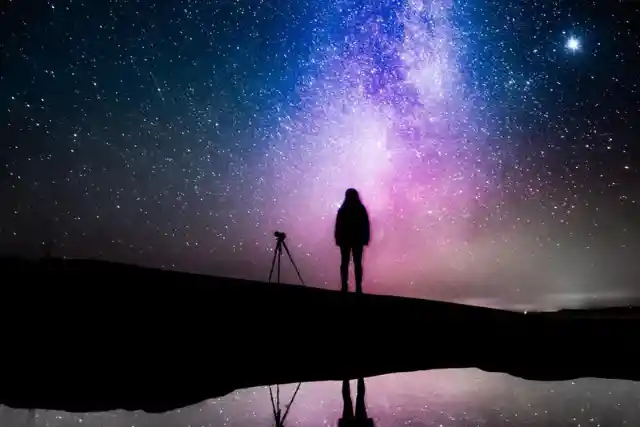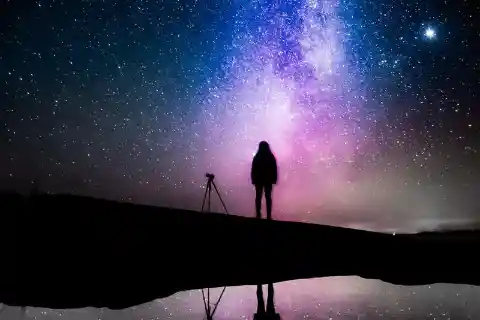Star Gazing At Its Best
Despite the year not faring as we expected there is always something to look up to. We are talking about looking up literally. Amateur astronomers had a fantastic year in 2021, despite the chaos we had last year. Earthbound viewers were rewarded with a stunning "ring of fire" solar eclipse, abnormally dark skies for the annual Perseid meteor shower, and an unexpected comet "Leonard" streaking across the December sky. This year again we are blessed with some extraordinary events. In 2022, another comet may become visible when it passes through our solar system. Here is a list of some of the most spectacular sky events happening this year.


1. February 15 to March 15: The Venus Show
The brightest of all the planets will be visible in the predawn morning sky, glowing low in the southeast sky a few hours before sunrise. On Feb. 13, Venus will be at its brightest, like a magnificent crescent phase via tiny telescopes and steadily held binoculars. It will wane to a half-moon phase on March 20, while reaching its greatest western elongation from the sun. Along the way, the moon will join it in a magnificent cosmic dance on February 26. 2. March 24 to April 5: A Planetary Trio While the stars look relatively motionless from Earth, the planets of our solar system appear to move around the night sky every year. From late March to early April, look to the southeastern horizon just before sunrise to catch this tri-planetary tango: Venus, Mars, and Saturn will be exceptionally close together. The fact that these two planets are about the same brightness (Saturn, magnitude +0.9, Mars +1.0) and the color contrast between yellow-white Saturn and orangish Mars will make this an extremely spectacular naked-eye sight. And next to it will be Venus shining brilliantly. 3. April 3 to May 1: Celestial Meeting Spring will be a busy time for celestial meetings. From April 30 to May 1, the brilliant, reddish Jupiter will appear to rise within a hair's breadth of the yellow-white Venus in the early morning hours before dawn. For the finest view of the near alignment, look to the southeast about an hour before sunrise. And to make it even sweeter, on the morning of April 27, spectators will be able to catch a glimpse of the waxing moon lingering close to the couple.
4. April 30: Partial Solar Eclipse The moon's dark shadow cone, from which a total eclipse may be observed, will entirely miss Earth, passing around 750 miles (1,200 km) below the South Pole. However, the moon's outer shadow, or penumbra, does scrape a portion of the Southern Hemisphere, resulting in a partial eclipse visible in varying degrees near sunset across a swath of the South Pacific Ocean and southern and western South America, including Chile, Argentina, Uruguay, southern Peru, southern Bolivia, western Paraguay, and a tiny slice of Brazil. 5. Early May: A Comet Visit On April 21, comet C/2021 O3 (PanSTARRS) will travel within 26.6 million miles (42.8 million kilometers) of the sun and may brighten to the forth magnitude — brilliant enough to see with the naked eye — during the final week of April into early May. It will be low in the west-northwest sky just after sunset in the spring evening sky, if visible. We'll simply have to wait and see what happens. 6. May 5: Meteor Shower Look to the eastern horizon for the constellation of Aquarius an hour or two before dawn—around 4 a.m. local time, wherever you are in the world. If you're patient, you could see more than a handful of shooting stars, which are expected to fall at speeds ranging from 10 to 20 meteors per hour. Those who are unable to watch the shooting stars on May 5 may be able to catch some stray fireballs near dawn on May 4 or 6. 7. May 15 – 16: Total Lunar Eclipse Viewers in the United States will be able to see a partial or total lunar eclipse—when the Earth's shadow totally covers the moon—in mid-May, depending on where they are. Only the sun's rays that travel through Earth's dusty atmosphere will be reflected by the moon during the maximum eclipse. The atmosphere will deflect much of the blue light from the sun, showering the eclipsed moon in a characteristic blood-red hue. Because the moon will pass south of the center of the Earth's shadow, the lowest part of the moon will look brightest during the complete phase, while the top section will appear substantially dimmer and more subdued. 8. May 30 – 31: Slow Dancing Meteors Perhaps the most dramatic sky event in 2022 will occur during the nighttime hours of May 30-31 for much of North America, when our planet will pass through a dense cloud of meteoroids ejected by the nucleus of a tiny comet, 73P/Schwassmann-Wachmann 3. This rare cosmic interaction might result in a spectacular, albeit fleeting, exhibition of slow-moving meteors — colloquially known as "shooting stars" — numbering in the dozens... or perhaps hundreds every hour. 9. June 14, July 13, and August 12: Super Moon Supermoons occur when the moon is fully illuminated at its perigee or the point in its orbit where it comes closest to Earth. According to Accuweather.com's Brian Lada, this placement makes the moon look considerably larger than usual. This summer will see three supermoons in a row, the first on June 14 and the others on July 13 and August 12. For East Coast stargazers, the full moon in June will rise in the southeast at about 9 p.m. Eastern time and remain visible in the sky until the next morning. 10. June 15 – 30: Alignment of Planets Early risers will be able to see a rare planet alignment in mid-to-late June, when Mercury, Venus, Mars, Jupiter, and Saturn line up in a spectacular row over North American skies. During the last two weeks of June, all five naked-eye planets will be visible at the same time, aligned in a line across the eastern and southeastern early twilight skies. The moon, which is fading from a gibbous to a narrow crescent phase, will encounter each planet on different mornings: Saturn on June 18; Jupiter on June 21; Mars on June 22; Venus on June 26; and lastly Mercury on June 27. 11. July 28 – 9: Delta Aquariid Meteor Shower Get up early in the morning to see 10 to 20 meteors per hour streak across the night sky. These showers, like the Eta Aquariids, will emerge from the constellation Aquarius, which is Latin for "the water carrier." This year's shower will occur during a new moon, providing lucky stargazers with the darkest sky and the highest odds of seeing a few fireballs. 12. August 11 – 13: Perseid Meteor Shower Every year, amateur and seasoned stargazers across North America look forward to the Perseids for a consistently stunning performance. The bright fireballs appear to arise from Perseus, the constellation named after the ancient Greek hero. Typical showers have a pace of 150 to 200 meteors per hour—but this year's peak days will coincide with a nearly or totally full moon, which will illuminate the night sky greatly and drown out some of the display. To make the most of the night, wait until two or three hours before dawn—after the moon has set but before the sun's rays begin to peek over the horizon—to stargaze. 13. September 26: Perihelic Opposition of Jupiter The biggest planet in our solar system will reach opposition and make its closest approach to Earth since October 1963, covering a distance of 367.4 million miles (591.2 million km). The massive planet will seem huge and dazzling against the faint stars of Pisces, the fishes' constellation. 14. October 25: Partial Solar Eclipse The moon's shadow falls mostly on Earth's north polar regions, resulting in this eclipse. It will be visible from an eastern section of Greenland and all of Iceland, as well as much of Europe, northeast Africa, and, to variable degrees, much of western and central Asia. The greatest eclipse, with about seven-eighths of the sun's diameter covered, happens around local sunset over the West Siberian Plain at Nizhnevertovsk (population 260,000), one of Russia's richest towns. 15. November 8: Total Lunar Eclipse The western half of North America, the Hawaiian Islands, eastern Asia, Indonesia, New Zealand, and the eastern half of Australia will benefit from this eclipse. The moon will set along the Atlantic Coast as it begins to emerge from the complete eclipse. The moon will pass to the north of the center of the shadow, and totality will last one hour and 25 minutes, as it did in May. 16. December 7 – 8: “M & M” Night The full moon will pass extremely near to Mars during the nighttime hours of December 7, effectively hiding it for parts of North America. On December 8, Mars will be in opposition to the sun, rising as the sun sets, reaching its greatest point in the sky around midnight, and setting at daybreak. It will eventually be seen at magnitude -1.9, brighter than Sirius, the brightest star in our night sky. 17. December 13 – 14: Geminid Meteor The Geminid meteor shower, currently considered as the greatest of the yearly meteor showers, has the unfortunate distinction of falling during the last quarter moon, which will smother all but the brightest meteors after midnight. This spectacle is the product of 3200 Phaethon, a peculiar asteroid-comet hybrid that circles the sun every 1.4 years and leaves a path of dust and pebbles in its wake.